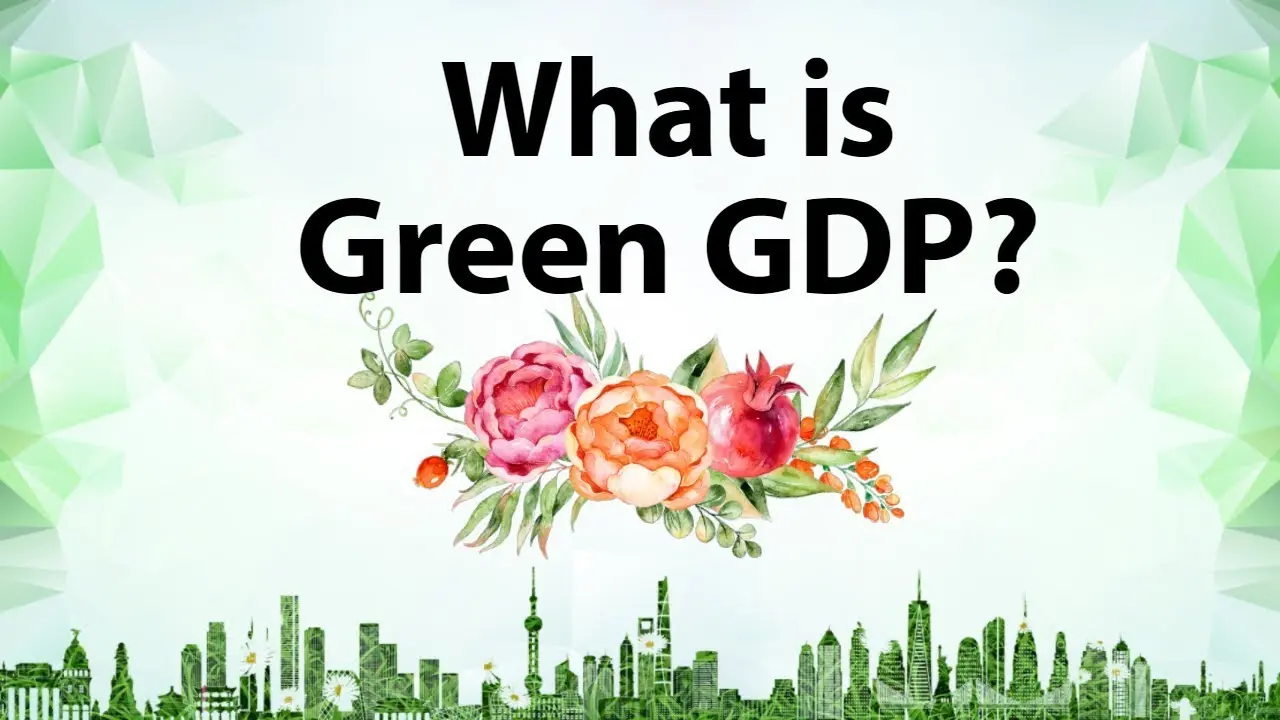Understanding Green GDP: Balancing Economic Growth with Environmental Sustainability
Introduction:
In recent years, the concept of Green GDP has gained significant attention as countries around the world grapple with the challenges of achieving sustainable development. Green GDP aims to measure economic growth while taking into account the environmental impact of economic activities. This article explores the concept of Green GDP and its importance in balancing economic growth with environmental sustainability.

What is Green GDP?
The Green Gross Domestic Product (GDP) is an indicator that factors in the environmental costs and benefits of economic activities. Unlike the conventional GDP, which solely focuses on economic output, the Green GDP accounts for the depletion of natural resources, environmental degradation, and the costs associated with pollution. It provides a more comprehensive and holistic view of economic development by considering the environmental consequences of economic growth.
Importance of Green GDP
Promoting Sustainable Development:
Green GDP encourages policymakers and economists to consider the long-term impacts of economic activities on the environment. By incorporating environmental factors into economic measurements, it fosters a more sustainable approach to development, ensuring the well-being of future generations.
Informing Policy Decisions:
The Green GDP provides valuable insights into the environmental consequences of various economic sectors. It helps policymakers identify areas that require mitigation measures, such as pollution control, resource conservation, and sustainable practices. This information guides the formulation of effective policies that promote both economic growth and environmental sustainability.
Assessing Green Initiatives:
Green GDP serves as a benchmark for assessing the effectiveness of green initiatives and policies. It allows policymakers to evaluate the progress made in achieving environmental targets and goals. By tracking the Green GDP over time, governments can monitor the success of their sustainability efforts and make necessary adjustments to policies and practices.
Historical Context
The concept of Green GDP emerged as a response to the growing concerns about environmental degradation and the unsustainability of traditional economic development models. It gained prominence in the late 20th century when environmental issues became more prominent on the global agenda. As countries recognized the need to balance economic growth with environmental preservation, the Green GDP concept evolved as a tool to measure the true cost of economic activities on the environment.

Key Takeaways from “Understanding Green GDP: Balancing Economic Growth with Environmental Sustainability”
| Serial Number | Key Takeaway |
|---|---|
| 1 | Green GDP incorporates environmental costs and benefits into economic measurements. |
| 2 | It promotes sustainable development by considering the long-term impacts on the environment. |
| 3 | Green GDP informs policy decisions and helps identify areas that require mitigation measures. |
| 4 | It serves as a benchmark to assess the effectiveness of green initiatives and policies. |
| 5 | The concept of Green GDP emerged as a response to environmental concerns and the need for sustainable development. |
Important FAQs for Students from this News
Q: What is the difference between Green GDP and conventional GDP?
A: The main difference is that Green GDP incorporates environmental costs and benefits into economic measurements, while conventional GDP solely focuses on economic output.
Q: Why is Green GDP important for sustainable development?
A: Green GDP is important for sustainable development because it considers the long-term impacts of economic activities on the environment, guiding policymakers to make decisions that balance economic growth with environmental preservation.
Q: How does Green GDP inform policy decisions?
A: Green GDP provides insights into the environmental consequences of different economic sectors, helping policymakers identify areas that require mitigation measures. This information guides the formulation of effective policies promoting economic growth and environmental sustainability.
Q: Can Green GDP be used to assess the effectiveness of green initiatives?
A: Yes, Green GDP serves as a benchmark for evaluating the effectiveness of green initiatives and policies. It allows governments to monitor progress towards environmental targets and make necessary adjustments to promote sustainability.
Q: What is the historical context of Green GDP?
A: Green GDP emerged as a response to concerns about environmental degradation and the unsustainability of traditional economic models. It gained prominence in the late 20th century as countries recognized the need to balance economic growth with environmental preservation.
Some Important Current Affairs Links

















